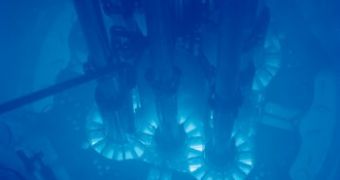Nuclear reactor cores are mainly cooled with the help of water, however if the water cannot remove the heat quickly enough from the core, the nuclear fuel might explode. In fact, this was the reason why the Chernobyl nuclear reactor failed in 1986; the core didn't receive enough cooling water, the heat build up determining the reactor to become unpredictable in operation. The computer failed to regain control over the reactor and from this point on, an unstoppable chain of events sealed the fate of the nuclear reactor.
The second problem with water-cooled nuclear reactors is that pressurized water nuclear reactors may boil all the liquid water into Steam, which is a poor heat conductor. This is why the primary water cooling system of such reactors is under tremendous pressure, so that water would not boil away. Nevertheless, the high temperature of the primary cooling system also puts in danger the secondary cooling system. If water in the second cooling system turns to steam, again heat may accumulate in dangerous amounts into the core.
University of Florida (in Gaineville) researchers believe that a simple solution to solve this problem is to use diamond nanoparticles along with water. Because diamonds have exceptional heat conducting properties, this could dramatically improve the heat transfer from the primary to the secondary cooling system. Further still, the diamond is chemically inert and extremely resilient while subjected to high levels of radiation, meaning that it cannot bundle into larger structures that may block the cooling system.
Ronald Baney, part of the research team, reveals that in fact almost any carbon allotrope and carbon related material can be used. Thus instead of diamond particles, researchers could use materials such as graphite, lonsdaleite, fullerene, amorphous carbon, black carbon, carbon nanotubes and many other carbon-based materials.
The size of the particles could vary between 0.5 nanometers and 200 nanometers, in a concentration of 0.0001 to 10 percent of the volume of fluid.

 14 DAY TRIAL //
14 DAY TRIAL //